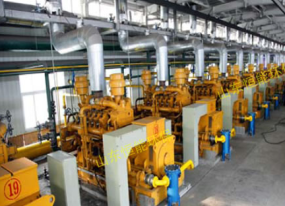今天的綜述,正如你所看到的,是對(duì)硫氧化細(xì)菌的新發(fā)展的總結(jié)。與SRB相比,SOB使用還原態(tài)硫作為電子供體,根據(jù)其能量和生長(zhǎng)條件可分為兩類:光硫細(xì)菌和化學(xué)自養(yǎng)無(wú)色硫細(xì)菌。
Today's review, as you can see, is a summary of the latest developments in sulfur oxidizing bacteria. Compared with SRB, sob uses reduced sulfur as electron donor. According to its energy and growth conditions, sob can be divided into two types: photosulfur bacteria and chemoautotrophic colorless sulfur bacteria.
光能SOB的特點(diǎn)是硫基厭氧光合作用。在厭氧條件下,它們利用光能從還原性硫化合物中獲得電子和氫,并固定無(wú)機(jī)碳以促進(jìn)細(xì)胞生長(zhǎng)。根據(jù)顏色等表型特征,主要分為綠色硫細(xì)菌(GSB)和紫色硫細(xì)菌(PSB)。
Photoenergy sob is characterized by sulfur based anaerobic photosynthesis. Under anaerobic conditions, they use light energy to obtain electrons and hydrogen from reductive sulfur compounds, and fix inorganic carbon to promote cell growth. According to the phenotypic characteristics of color, they are mainly divided into green sulfur bacteria (GSB) and purple sulfur bacteria (PSB).
這些細(xì)菌通常棲息在含還原性硫化物和透光的水生環(huán)境中的缺氧層,或在潮上帶鹽灘和沼澤中。所有的GSB都是嚴(yán)格的厭氧和光合自養(yǎng)生物。光合自養(yǎng)生物、異養(yǎng)生物和有機(jī)碳源的兼性更強(qiáng)。因此,在城市污水有機(jī)負(fù)荷較高的情況下,PSB將超過GSB。但它們都是通過捕獲吸收光的物質(zhì)如細(xì)菌葉綠素和類胡蘿卜素來獲得顏色,并獲得ATP。

These bacteria usually inhabit the anoxic layer in the aquatic environment with reductive sulfide and light transmittance, or in the salt marshes and marshes of the supratidal zone. All GSBS are strictly anaerobic and photosynthetic autotrophs. Photosynthetic autotrophs, heterotrophies and organic carbon sources are more facultative. Therefore, PSB will exceed GSB when organic load of urban sewage is high. But they all get color and ATP by capturing light absorbing substances such as bacterial chlorophyll and carotenoids.
除了GSB和PSB,一些光養(yǎng)菌不利用硫氧化進(jìn)行代謝,但也能在一定程度上進(jìn)行硫氧化,如藍(lán)藻(又稱藍(lán)藻)。近年來的研究發(fā)現(xiàn),它可以在厭氧和含氧光合作用之間進(jìn)行切換,這些特性也有利于其在污水處理中的應(yīng)用。
In addition to GSB and PSB, some phototrophic bacteria do not use sulfur oxidation for metabolism, but also can carry out sulfur oxidation to a certain extent, such as cyanobacteria (also known as cyanobacteria). In recent years, it has been found that it can switch between anaerobic and aerobic photosynthesis, and these characteristics are also conducive to its application in wastewater treatment.
化學(xué)硫氧化細(xì)菌通常被稱為無(wú)色硫細(xì)菌。它們可以在沒有光的情況下將幾乎所有的還原硫化物氧化到電子受體,甚至一些有機(jī)硫化合物。具體可分為嚴(yán)格化學(xué)無(wú)機(jī)自養(yǎng)型、兼性化學(xué)無(wú)機(jī)自養(yǎng)型、化學(xué)無(wú)機(jī)異養(yǎng)型和化學(xué)有機(jī)異養(yǎng)型四種類型。它的電子受體可以是氧、硝酸鹽和亞硝酸鹽氮。大多數(shù)自養(yǎng)反硝化sobs是兼性好氧細(xì)菌,它們可以同時(shí)利用氧和氧氮化合物作為電子受體。
Chemical sulfur oxidizing bacteria are usually called colorless sulfur bacteria. They can oxidize almost all reducing sulfides to electron acceptors or even some organic sulfur compounds without light. It can be divided into four types: strict chemical inorganic autotrophic type, facultative chemical inorganic autotrophic type, chemical inorganic heterotrophic type and chemical organic heterotrophic type. Its electron acceptors can be oxygen, nitrate and nitrite nitrogen. Most autotrophic denitrifying sobs are facultative aerobic bacteria, which can utilize oxygen and nitrogen compounds as electron acceptors at the same time.
